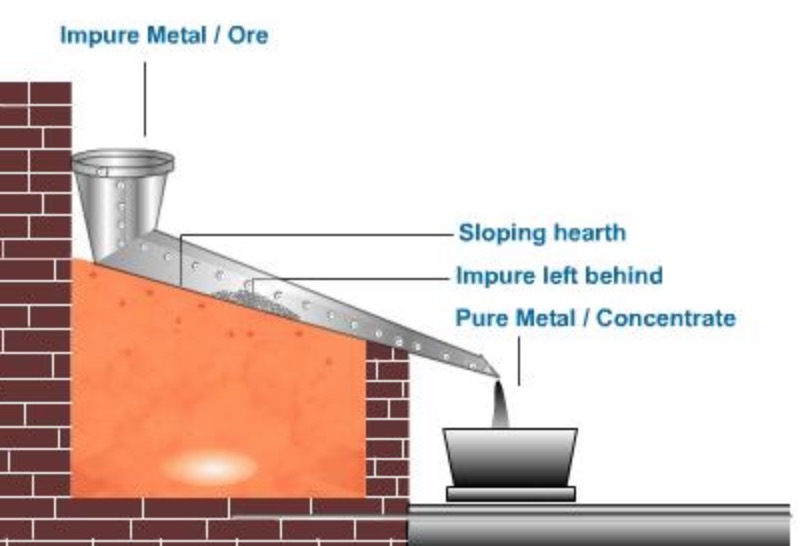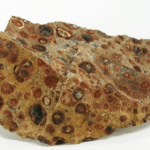
(a) Electrolytic refining
This is one of the most convenient and important method of refining and gives a metal of high purity. This method is applicable to many metals such as Cu, Ag, Pb, Au, Ni, Sn, Zn etc. The blocks of impure metal form the anode and thin sheets of pure metal form the cathode. A solution of a salt of the metal is taken as an electrolyte. On passing an electric current through the solution pure metal dissolves from the anode and deposits on cathode. By this process, more metal ions undergo reduction and pure metal is deposited at the cathode. The insoluble impurities either dissolve in the electrolyte or fall at the bottom and collect as anode mud. For example, in the refining of copper, impurities like Fe and Zn dissolve in the electrolyte, while Au, Ag and Pt are left behind as anode mud.
Copper: During the electrolytic refining of a copper, athick block of impure copper is made anode, and thin plate of pure copper is made cathode. Copper sulphate solution is used as an electrolyte. On passing electric current, following reactions take place:
Cu2+ ions (from copper sulphate solution) go to the cathode (negative electrode), where they are reduced to copper, which gets deposited on the cathode.
Cu2+ + 2e– – > Cu
Copper (of impure anode) forms copper ions, and these go into solution of electrolyte.
Cu – > Cu2+ + 2e–
Thus, the net result is transfer of pure copper from anode to the cathode. Impurities like zinc, iron, etc., go into solution; while noble impurities like silver, gold, etc., are left behind as anode mud. Copper is refined to 99.98% pure copper by electrolytic refining (Fig.).

(b) Zone refining
This method is employed for preparing highly pure metal (such as silicon, tellurium, germanium), which are used as semiconductors. It is based on the principle that melting point of a substance is lowered by the presence of impurities. Consequently, when an impure molten metal is cooled, crystals of the pure metal are solidified, and the impurities remain behind the remaining metal. (Fig.).
The process consists in casting the impure metal in the form of a bar. A circular heater fitted around this bar is slowly moved longitudinally from one end to the other. At the heated zone, the bar melts, and as the heater moves on, pure metal crystallizes, while the impurities pass into the adjacent molten part. In this way, the impurities are swept from one end of the bar to the other. By repeating the process, ultra pure metal can be obtained.

(c) Mond’s process
Thermal methods include methods as carbonyl method, decomposition of hydrides etc. The carbonyl method is used for the refining of metals like Ni and Fe. For example, in case of nickel, the impure metal is heated with CO. The nickel carbonyl thus formed is then decomposed (after distilling off the impurities) to get pure nickel metal and CO. The process is known as Mond’s process.
Ni + 4CO – > Ni(CO)4 – > Ni + 4CO
It is based on the following facts:
1. Only nickel (and not Cu, Fe, etc.) forms a volatile carbonyl, Ni(CO)4, when CO is passed over it at 500C.
2. the nickel carbonyl decomposes at 1800C to yield pure nickel.


